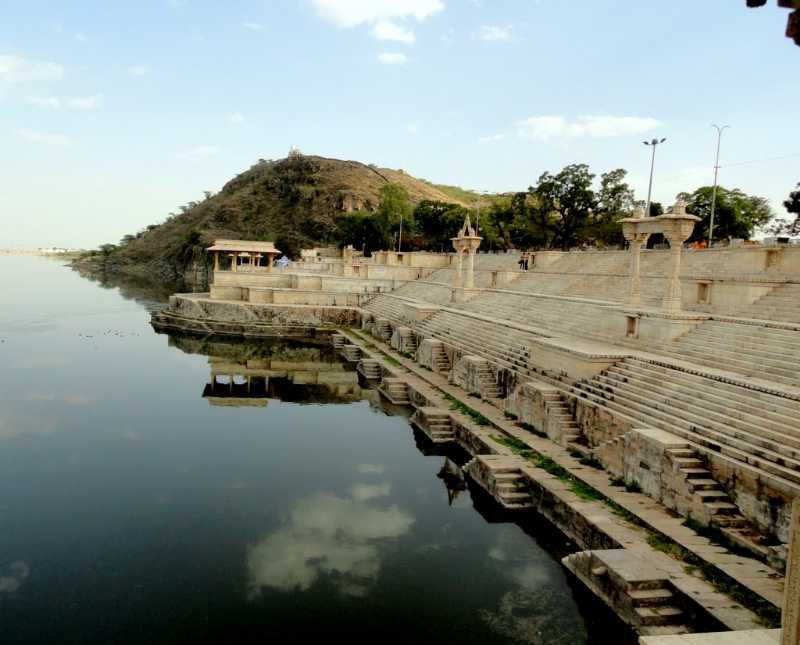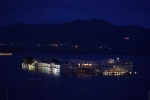Rajsamand Tourism
Located 67 km North of the now popular destination wedding city of Udaipur, is the small town of Rajsamand. It got the name from the eponymous Rajsamand lake which is the second largest man-made lake in the world. Apart from the renowned historical edifices of Kumbhalgarh and Haldighati, the place also holds religious importance for different sects.
This is where the temple of Shrinathji stands, who was the chief deity of the Vaishnav community. Dwarakadhish temple believed to have a miraculous idol is also located in Rajsamand. The famous temple of Lord Vishnu with four hands (Charbhuja) is also situated here. Many temples dedicated to Lord Shiva can also be found here.
Rajsamand is most famous for its marble craft, and it is the single largest marble producing unit and district in the country. The district also holds the rare and laudable distinction of having a male-female ratio of 1:1.
Download Rajsamand PDF Guide >
What's Great?
Easily accessible as it is very well connected to the nearby cities by air, rail and road. The local Rajasthani people are very warm and welcoming of tourists.
What's not so Great?
Limited accommodation options and eating joints. Extremely hot summers.
For Whom
Rajsamand is a destination that attracts all kinds of tourists not only from in and around Rajasthan but also from every part of the country. It is a popular pilgrimage site along with being a hub for nature lovers. It can be visited by families and solo travellers.
History
The history of Rajsamand begins from the year 1660 when Maharana Raj Singh had the lake built and named it after his name. Located in Rajasthan, Rajsamand has stood privy to tales of war, courage, and bravery. The present-day town came into existence in 1991, when it was carved out from the district of Udaipur. Even as part of Udaipur, it has witnessed the fight for independence in 1857, against the British, under the leadership of Tantya Tope. Rakamgarh ka Chhapar is the place where the strive took place. This is where fort Kumbhalgarh stands, housing the birthplace of the legendary Maharana Pratap.
The soil of Haldighati, where epic battles have been fought and where Chetak, perhaps the most famous horse in history died; adds to the glorious history of the town.
Culture
When in Rajasthan, soak in the culture that loves the colour and celebrates its vibrant hues. Local inhabitants can be seen wearing vividly coloured outfits as they go about their daily routine. Simplicity is in the air as locals are simple, helpful people and you can expect warm hospitality and ready help whenever you visit.
While locals, especially the older generations converse mostly in Mewari, communication is not a problem as Hindi is also commonly spoken and understood. Communicating in English is also quite easy as it is a tourist place of significance and most people understand basic English.
Rajasthani culture is incomplete without its music and folk dances. Udaipur is nearby, and you can get to see the Kalbeliya dance, Terahtaali, Bhavai, and Dandi Gair. The melodious echoes of Tansen, Sarangi, and Naad will tug at the heartstrings of the music lover inside, compelling you to dance to a beat or two.
Shopping in Rajasmand
The town is most famous for its marble production and it's only natural that marble knick-knacks and baubles from Rajsamand are a must-take-home souvenir when going back. Think anything marble, nameplates, flower vases, monuments, temples, pen stands, tiny animals, religious idols or little jewellery boxes. Name it and it?s there and that too with intricate patterns and crafting.
Taking out time to visit the tiny, nondescript village of Molela would be well worth anyone's time. Why? Because Modela is home to the peculiar craft of Terracotta plaques. It is unique because the idols are made as a flat surface and this is the only place in entire India where this craft is practised.
Watching the brown clay come alive in the form of beautiful colourful idols is a memorable experience in itself. Taking home these visual delights an even better one. Each colour is special as every colour depicts a specific deity. For example, blue depicts Kaladev and Orange depicts Goradev.
Tribals from the state of Madhya pradesh unfailingly make an annual trip to Molela, just to buy these idols as they attach a lot of religious significance to them.
One Day Itinerary
An ideal itinerary for sightseeing would be 2 days. For an even more relaxed and thorough exploration, the trip can be stretched to 3 days.
Day 1:Reach Udaipur by flight or train. Proceed to Rajsamand by bus or taxi. Take some time to rejuvenate in a hotel or resort. Visit Rajsamand lake and spend time shopping the local craft. Have dinner at one of the local restaurants and try authentic Rajasthani flavours.
Day 2:Visit the Kumbhalgarh Fort and Kumbhalgarh Sanctuary. If time and energy permit, visit the tiny Molela village to buy one of its kind terracotta plaque idols.
Day 3:Save the day for a visit to Haldighati and the tomb of Chetak. Start your day early in the morning. This way, if time permits, you can try to fit in a visit to Kankroli and Sanwariya Nath temples.
No doubt it will be an exhausting 3-day excursion, but way back to home will be filled with colourful and happy memories.
Restaurants and Local Food in Rajsamand
Due to its climate, Rajasthani food does not make much use of vegetables. Instead, foodstuff which grows without much water, like lentils and grains finds a prominent place in the local cuisine. Vegetarian cuisine is common and easily available. Rajasthani people love their green and red chillies. So, expect spicy food and if you have a low tolerance for spice, inform your servers in advance to allow them to serve you accordingly.
The local cuisine of Daal Bati, Gatte (a curry preparation of yogurt and gram flour), Pitod ki Sabji (Curry made from a type of savoury lentil cake), papad ki sabji, Ker-Sangri (dried berries and beans growing on local trees) ki sabji, Bajre ki roti with oodles of Ghee (clarified butter) and Gur (jaggery), kheech (porridge-like preparation made from different flours) topped with Ghee will keep you full and sated during your trip.
Gajanan Hotelon Nathdwara-Kankroli Road is especially famous for its scrumptious, authentic Rajasthani food.Kumbhal Palace Restaurantnear the Kumbhalgarh fort serves cheap, homely food. Gujarat restaurant, also near Kumbhalgarh fort serves authentic and homely Gujarati and Rajasthani food along with some rich desserts.
View 2 Restaurants in Rajsamand >>
Oct-Maris the best time to visit Rajsamand
October to March are the best months to visit Rajsamand. Even though Rajsamand is accessible throughout the year, but it is scorching in summers and even in monsoons with temperatures reaching up to 42 degrees Celcius. The winters are relatively cooler with the days having an average temperature of 26 degrees Celcius while the nights are as cool as 9 degrees Celcius.
Weather in Rajsamand
Loading...
Rajsamand in Summer (April - June)
This is the least advisable time to visit Rajsamand, owing to the unbearably hot climate, and sometimes humid days, especially during the months of May & June.
Rajsamand in Monsoon (July - September)
This is the another good time for a visit to the site, owing to the cool and pleasant climate. The offseason is the best for budget travellers, who can expect some good discounts and great deals on hotel tariffs.
Rajsamand in Winter (October - March)
This is the most advisable time for a trip to Rajsamand. The area is pleasant for a visit at this time, with temperatures rarely going below 9 degrees Celcius. It is advisable to carry some light woollen clothes as well.
Monthly Weather in Rajsamand
Month
Avg. Minimum (°C)
Avg. Maximum (°C)
January
9
23
February
12
29
March
17
33
April
24
39
May
28
41
June
29
38
July
25
32
August
24
30
September
24
34
October
20
33
November
12
30
December
11
28
Comments on Rajsamand
Post Your Comment


 Rajsamand Lake
Rajsamand Lake Haldi Ghati
Haldi Ghati Kumbhalgarh Wildlife Sanctuary
Kumbhalgarh Wildlife Sanctuary Kankroli
Kankroli Udaipur
Udaipur Kumbhalgarh
Kumbhalgarh Nathdwara
Nathdwara Chittorgarh
Chittorgarh Jaipur
Jaipur Ranakpur
Ranakpur